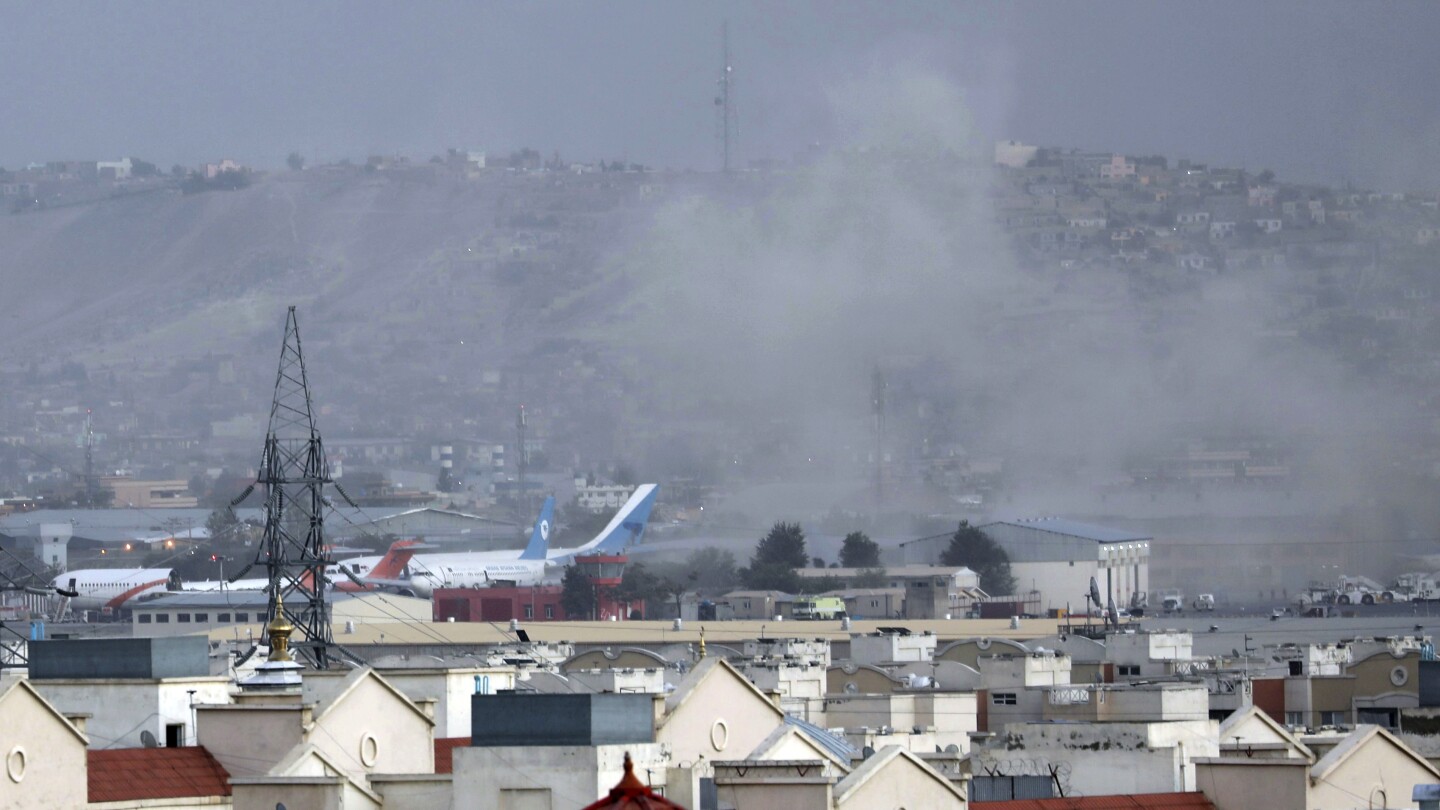WASHINGTON (AP) —
The Pentagon’s Central Command has decided to interview roughly two dozen service members who were at the Kabul airport when suicide bombers attacked during U.S. forces’ chaotic Afghanistan withdrawal but weren’t included in the military’s initial investigation.
The decision, according to officials, does not reopen the administration’s investigation into the deadly bombing and the withdrawal two years ago. But the interviews are meant to see if any of the service members have new or different information. The new interviews were ordered by Gen. Erik Kurilla, head of U.S. Central Command, and triggered in part by assertions by at least one service member injured in the blast who said he was never interviewed about it and that he may have been able to stop the attackers.
The additional interviews will likely be seized on by congressional critics, mostly Republican, as proof that the administration bungled the probe into the attack, in addition to mishandling the withdrawal. And it may reopen wounds for families of those killed and injured, particularly those who have complained that the Pentagon hasn’t been transparent enough about the bombing that killed 170 Afghans and 13 U.S. servicemen and women.
U.S. Central Command’s investigation concluded in October 2021 that given the worsening security situation at the airport’s Abbey Gate as Afghans became increasingly desperate to flee, “the attack was not preventable at the tactical level without degrading the mission to maximize the number of evacuees.” And, the Pentagon has said that the review of the suicide attack had turned up neither any advance identification of a possible attacker nor any requests for “an escalation to existing rules of engagement” governing use of force by U.S. troops.
Central Command plans to speak with a number of service members who were severely wounded in the bombing at the Abbey Gate and had to be quickly evacuated from the country for medical care. They represent the bulk of the planned interviews, but a few others who weren’t wounded are also included. Officials also did not rule out that the number of interviews could grow as a result of those initial conversations.
“The purpose of these interviews is to ensure we do our due diligence with the new information that has come to light, that the relevant voices are fully heard and that we take those accounts and examine them seriously and thoroughly so the facts are laid bare,” Central Command spokesperson Michael Lawhorn said in a statement.
“These interviews will seek to determine whether those not previously interviewed due to their immediate medical evacuation possess new information not previously considered, and whether such new information, if any, would affect the results of the investigation, and to ensure their personal accounts are captured for historical documentation,” Lawhorn said.
Officials on Friday began informing family members of those killed in the bombing as well as members of Congress about the latest plan. Lt. Gen. Patrick Frank, head of Army Central Command, is overseeing the team conducting the interviews, which is led by Army Brig. Gen. Lance Curtis. Gen. Kurilla has asked Frank to provide an update in 90 days.
In emotional testimony during a congressional hearing in March, former Marine Sgt. Tyler Vargas-Andrews told lawmakers that he was thwarted in an attempt to stop the suicide bombing . He said Marines and others aiding in the evacuation operation were given descriptions of men believed to be plotting an attack before it occurred.
He said he and others spotted two men matching the descriptions and behaving suspiciously, and eventually had them in their rifle scopes, but never received a response about whether to take action.
“No one was held accountable,” Vargas-Andrews told Rep. Mike McCaul, R-Texas, the chairman of the House Foreign Affairs Committee. “No one was, and no one is, to this day.”
The March hearing was set up to examine the Biden administration’s handling of the withdrawal. Taliban forces seized the Afghan capital, Kabul, far more rapidly than U.S. intelligence had foreseen as American forces pulled out. Kabul’s fall turned the West’s withdrawal into a frenzy, putting the airport at the center of a desperate air evacuation by U.S. troops.
In April, President Joe Biden’s administration laid blame on his predecessor, President Donald Trump, for the deadly withdrawal. A 12-page summary of the results of the “ hotwash ” of U.S. policies around the ending of the nation’s longest war asserts that Biden was “severely constrained” by Trump’s decisions.
It acknowledges that the evacuation of Americans and allies from Afghanistan should have started sooner, but blames the delays on the Afghan government and military, and on U.S. military and intelligence community assessments.
The administration has refused to release detailed reviews conducted by the State Department and the Pentagon, saying they are highly classified.
The White House summary says that when Biden entered office, “the Taliban were in the strongest military position that they had been in since 2001, controlling or contesting nearly half of the country.”
A review by U.S. Inspector-General for Afghanistan John Sopko concluded that actions taken by both the Trump and Biden administrations were key to the sudden collapse of the Afghan government and military, before U.S. forces completed their withdrawal in August 2021.
That includes Trump’s one-sided withdrawal deal with the Taliban, and the abruptness of Biden’s pullout of both U.S. contractors and troops from Afghanistan, stranding an Afghan air force that previous administrations had failed to make self-supporting, the review concluded.

